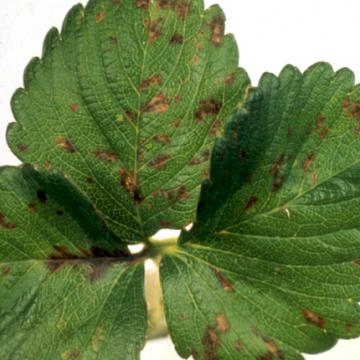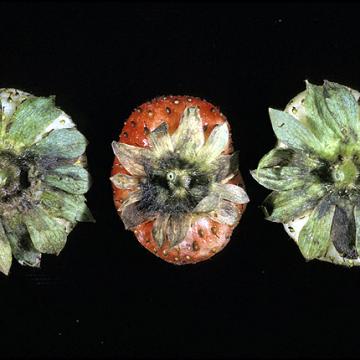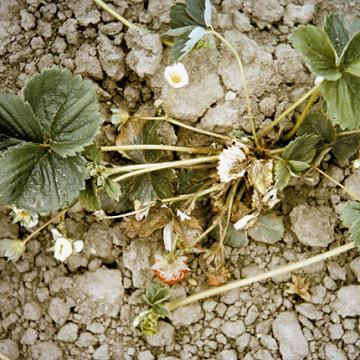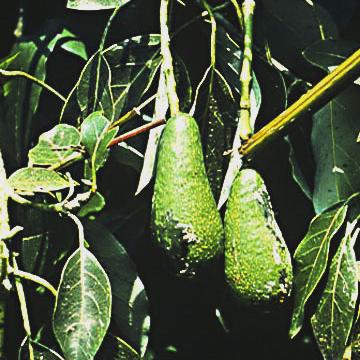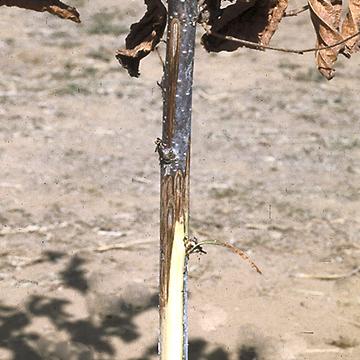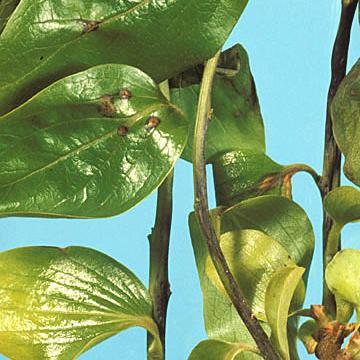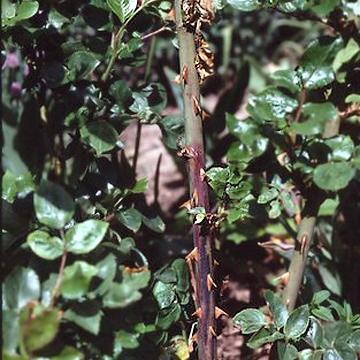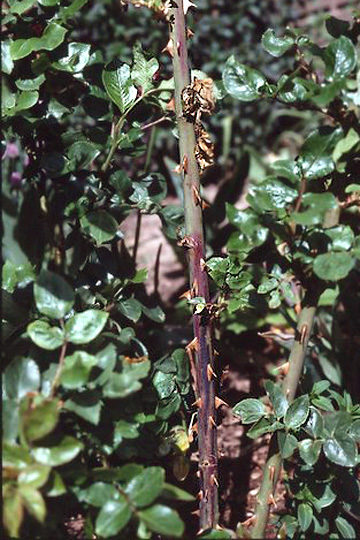DISEASE: Angular leaf spot
HOST: Strawberry
Early stage of disease begins as water-soaked, angular lesions, often with yellow ooze. There also are blight and vascular collapse stages.

Angular leaf spot | Strawberry
DISEASE: Angular leaf spot
HOST: Strawberry (Fragaria × ananassa)
PATHOGEN: Xanthomonas fragariae
SOURCE: M. Schroth
DISEASE: Angular leaf spot
HOST: Strawberry
Advanced stage of disease with dry, brownish necrotic lesions on upper leaf surface.
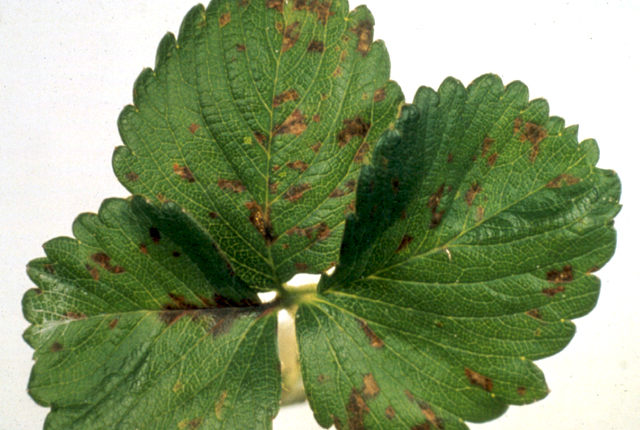
Angular leaf spot | Strawberry
DISEASE: Angular leaf spot
HOST: Strawberry (Fragaria chiloensis)
PATHOGEN: Xanthomonas fragariae
SOURCE: A. Alvarez
DISEASE: Angular leaf spot
HOST: Strawberry
Diseased sepals.
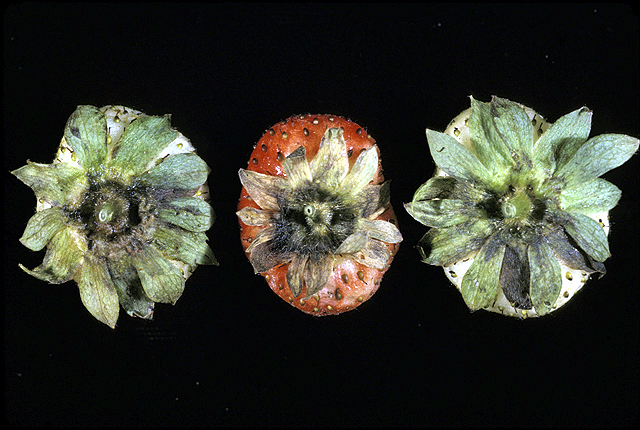
Angular leaf spot | Strawberry
DISEASE: Angular leaf spot
HOST: Strawberry (Fragaria × ananassa)
PATHOGEN: Xanthomonas fragariae
SOURCE: M. Schroth
DISEASE: Angular leaf spot
HOST: Strawberry
Vascular collapse stage occurs from systemic invasion of crown region.
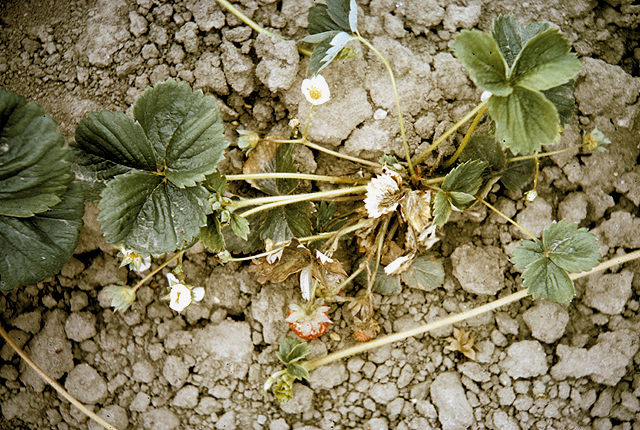
Angular leaf spot | Strawberry
DISEASE: Angular leaf spot
HOST: Strawberry (Fragaria × ananassa)
PATHOGEN: Xanthomonas fragariae
SOURCE: M. Schroth
DISEASE: Bacterial blast and fruit spot
HOST: Avocado
White bacterial ooze on surface of fruit. Pseudomonas strains that cause canker likely differ from those that infect fruit and leaves.
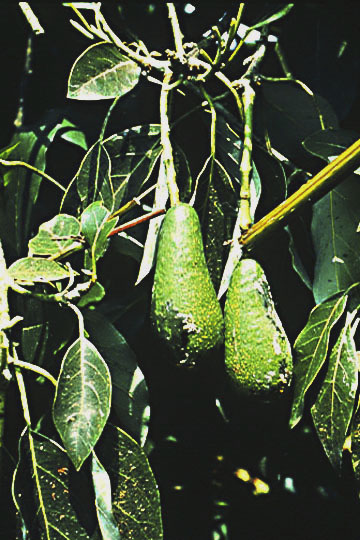
Bacterial blast and fruit spot | Avocado
DISEASE: Bacterial blast and fruit spot
HOST: Avocado (Persea americana)
PATHOGEN: Pseudomonas syringae
SOURCE: L. Fucikovsky
DISEASE: Bacterial blight
HOST: Hazelnut
Diseased young tree with discoloration of the cambium. Dieback of young twigs and branches is characteristic. Other typical symptoms are bud and twig necrosis and small, angular or round, water-soaked leaf spots.
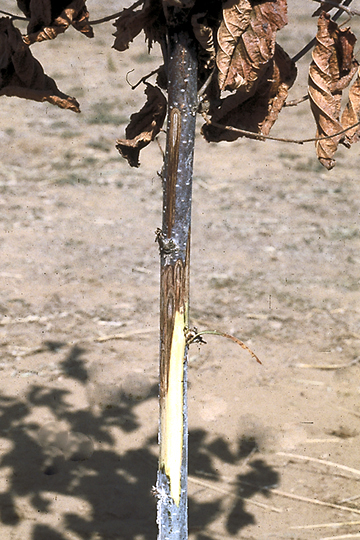
Bacterial blight | Hazelnut
DISEASE: Bacterial blight
HOST: Hazelnut (Corylus americana)
PATHOGEN: Xanthomonas arboricola pv. corylina
SOURCE: J. Pscheidt
DISEASE: Bacterial blight
HOST: Persimmon
Diseased shoots with spots on leaves and necroses on stems.
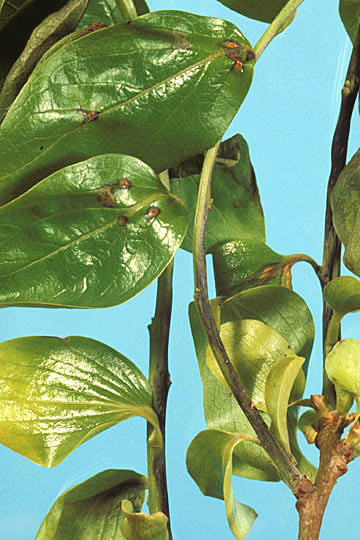
Bacterial blight | Persimmon
DISEASE: Bacterial blight
HOST: Persimmon (Diospyros sp.)
PATHOGEN: Pseudomonas syringae
SOURCE: J. Young



